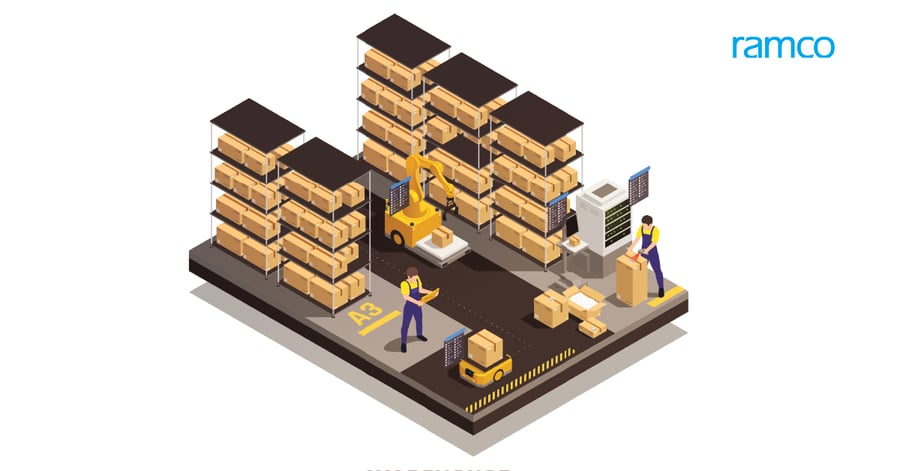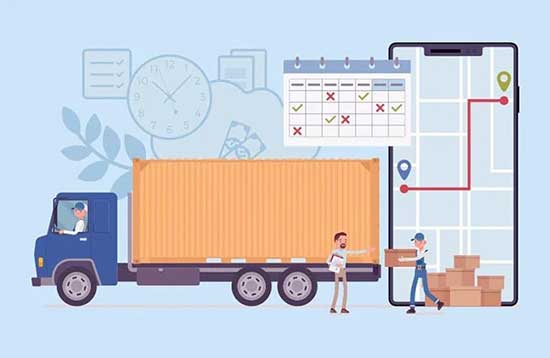
Cobots in Warehouse: Boosting Logistics Automation
Cobots in Warehouse: Boosting Logistics Automation
6:55
Published :

The recent pandemic has disrupted the supply chains, impacted competitiveness, economic growth, and job creation. These uncertainties, however, have positively impacted on technological advancements in logistics. Be it the number of logistics technology start-ups getting funded or the existing tech organizations moving into a consolidation mode through mergers and acquisitions – all are indicators that directly correlate with these changes. In addition, after the COVID-19 outbreak, there is a boom in online orders and e-commerce business which has resulted in a 15-20% yearly growth for warehouse providers.
Behind this growth is the underlying technology powering warehouse operations, including hardware and software. To sustain this growth and to serve future customers, there is an urgent need for technology scalability and agility and the Logistics Service Providers (LSPs) must do it without breaking the bank. Robotics in the warehouse space has grown by leaps and bounds during the past year, especially with the emergence of Robotics as a Service (RaaS). The technology is now more affordable, and this automation can help warehouse providers handle the sudden increase in volumes.
The reason behind LSP’s shift towards warehouse management software and logistics automation can be attributed to the following reasons:
Also Read: Automation in Logistics: Ideal or Attainable?
Whenever we think of robots, we are encountered with an innate fear of losing out our jobs to machines, a fear that every working class must have encountered. But that is not the kind of robots we are talking about; we are talking about co-bots (collaborative robots) that work in tandem with humans. One of the most important benefits of Cob-bots is achieving efficiency and accuracy in warehouse operations and in warehouse management systems.
These co-bots are packed with advanced sensors and vision technology to cater to the needs of warehouse operations. Co-bots do not replace operators, but they learn to perform functions with utmost accuracy without the slightest wear and tear. As a result, they increase the accuracy of picking/put away, improve safety, and reduce operating costs, thereby creating a positive impact on productivity, and facilitating warehouse and logistics automation.
According to ISO 10218 part 1 and part 2, some of the key variants in co-bots are:
Loup Ventures, the venture capital firm, has predicted that the co-bot industry will represent a $6.8 billion market opportunity by 2025. Continue reading to know why:
But having only co-bots is not the answer to all the warehouse woes. What will bring an overhaul in the warehouse is an integrated warehouse management software solution, which can guide the co-bots and reprogram them through its integration capability besides automating logistics. It will also improve the interaction between the employees and the co-bots, ensuring there’s a seamless flow of information between the two.
As robotics and co-bots transform warehouse operations, the backbone of this digital shift lies in the efficiency of WMS systems. A modern WMS warehouse management system ensures that automation, human resources, and robotics work seamlessly together. By centralizing operational data and streamlining processes, these platforms help logistics providers achieve scalability, accuracy, and agility without excessive costs.
One of the biggest advantages of advanced warehouse systems is the ability to integrate with robotics, IoT devices, and enterprise platforms, creating a connected ecosystem. This integration reduces duplication of tasks, prevents data silos, and supports predictive analytics that can forecast demand spikes or inventory shortages. In highly competitive markets, this real-time visibility enables businesses to react faster, minimize disruptions, and maintain consistent service levels.
Equally important is the role of warehouse inventory management software in optimizing space utilization and tracking goods with precision. With features like automated replenishment, barcode scanning, and AI-driven insights, organizations can significantly reduce stockouts and overstocking issues. The ability to map inventory movement down to individual SKUs provides transparency and control that traditional manual methods cannot match.
In today’s logistics environment, where customer expectations are shaped by e-commerce giants, efficiency and accuracy are no longer optional. The synergy between robotics, co-bots, and a robust WMS warehouse management system ensures warehouses are equipped to handle higher volumes, shorter lead times, and complex order requirements. Investing in these technologies not only enhances productivity but also builds resilience for long-term growth.
There is a multitude of benefits of automating logistics, we’ve collated a few of them:
With its leading warehouse management systems, Ramco provides complete warehouse automation across order streaming, planning & allocation, waving and load planning, and integrates with Bots, AGVs, ERPs, and order management systems. For anyone operating a warehouse, it is now up to them to embrace the complete solution for automating logistics and warehouse that will complement each other, instead of a piecemeal adoption of the new-age tech.
A cobot, or collaborative robot, is designed to work alongside human operators, unlike traditional robots that operate independently in isolated environments. Cobots enhance warehouse and manufacturing operations by performing repetitive or precise tasks safely with human collaboration. Their user-friendly design, adaptability, and advanced sensors make them suitable for flexible, scalable logistics operations.
Cobots improve warehouse efficiency by automating tasks such as picking, packing, palletizing, and quality inspection with high precision. They reduce manual errors, minimize ergonomic risks, and support continuous operations. By working collaboratively with human workers, cobots maintain safety standards while increasing throughput, enhancing accuracy, and ensuring timely order fulfillment in modern logistics operations.
Logistics automation reduces operational costs, eliminates manual errors, and improves speed and accuracy across warehouse operations. Advanced systems provide real-time inventory visibility, automated replenishment, and integration with transport management systems. Automation enables better decision-making, predictive analytics, and higher customer satisfaction while enhancing organizational control, scalability, and efficiency in today’s e-commerce-driven supply chains.
Cobots integrate with warehouse management systems (WMS) through APIs and IoT connectivity, allowing real-time coordination of tasks. WMS platforms guide cobots in picking, packing, and inventory handling while capturing data for analytics. This integration ensures seamless collaboration between humans, robotics, and software, optimizing workflows, minimizing errors, and enhancing the efficiency of modern automated warehouses.
Industries such as e-commerce, retail, automotive, pharmaceuticals, and consumer goods benefit significantly from cobot adoption. Any sector with repetitive, high-volume warehouse operations gains from improved efficiency, accuracy, and worker safety. By combining cobots with ERP and WMS solutions, these industries can scale operations, reduce labour costs, and improve customer satisfaction in competitive and fast-paced supply chains.
Post-pandemic, logistics providers face surging e-commerce demand, labour shortages, and the need for operational resilience. Automation, including cobots and AI-driven WMS, allows providers to maintain efficiency while reducing human dependency. By adopting integrated automation, logistics companies improve accuracy, speed, and scalability, ensuring they can meet customer expectations and adapt to market volatility without excessive cost increases.
Modern WMS software optimizes inventory by providing real-time visibility, automated replenishment, and AI-driven demand forecasting. It ensures stock levels align with production and order requirements, reduces overstocking and stockouts, and improves space utilization. When integrated with cobots and robotics, WMS systems streamline material handling, enhance accuracy, and maintain operational efficiency in dynamic warehouse environments.
Yes, logistics automation enhances customer service by ensuring faster, accurate order processing, real-time shipment tracking, and on-time delivery. Automated systems minimize human errors and delays, improving responsiveness to fluctuating demand. With cobots and WMS integration, organizations can handle higher order volumes efficiently, leading to improved customer satisfaction, retention, and competitiveness in the digital-first logistics landscape.
AI in warehouse management enables predictive analytics, demand forecasting, and intelligent task allocation for cobots and human operators. It optimizes inventory, automates decision-making, and identifies process inefficiencies before they escalate. AI-driven insights allow logistics providers to scale operations, maintain service levels, and adapt to market changes quickly, driving both operational efficiency and business growth.

All Rights Reserved. © Copyright 2024. Ramco Systems.